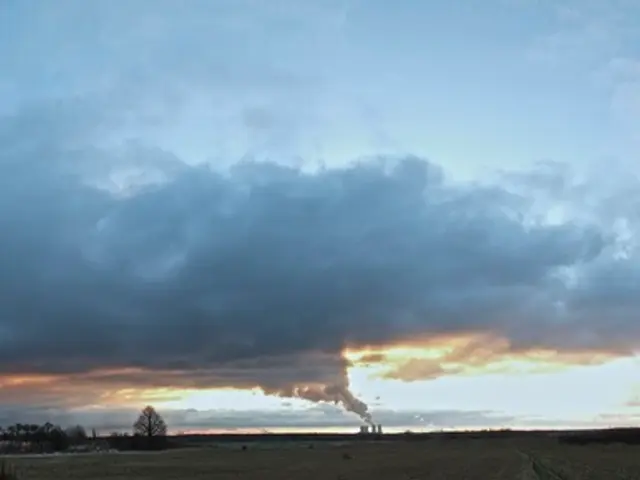Unusually high temperatures in April break Lithuania's 18th record this year for the warmest weather.
Unprecedented Warmth Sweeps Across Lithuania: A Climate Change Preview
Lithuania is currently experiencing an unusual heatwave, with temperatures soaring to record-breaking highs. On April 18, several cities in Lithuania reached 29.1 degrees Celsius, surpassing previous records by 6 degrees. This unusual warmth is attributed to a strong southern airflow from North Africa, according to meteorologist Gytis Valaika, who also notes that the unusual warmth brought dust and dryness.
The heatwave has caused unseasonal changes in the blooming and fruiting patterns of plants. Blueberries, which typically bloom in mid-June, are already flowering, and anemones, which used to bloom around Mother's Day, are now fading in April after blooming a month early.
The prolonged heat has also extended the active period for ticks, with ticks remaining active from March 2024 to mid-February 2025, with just a two-week dormant period. Ten cases of tick-borne encephalitis have already been reported this year, and experts warn that the increased active period for ticks increases the risk of tick bites.
The unusual warmth and lack of precipitation have also raised concerns about drought. If there is no significant precipitation soon, the drought could escalate into a severe drought. Societies must prepare for more frequent extreme climate fluctuations, as experts warn that these will become more frequent as the climate continues to warm.
The predicted long-term ecological impacts of increased temperature fluctuations in Lithuania due to climate change include altered species phenology, shifts in habitat suitability, increased stress on native flora and fauna, and higher vulnerability to heatwaves and related mortality risks.
Rising temperature fluctuations can disrupt plant phenology, for example, altering the timing of flowering and maturation of key crops like wheat. Native species adapted to cooler, more stable temperatures may face range contractions or local extinctions, while invasive species better adapted to warmer and more variable climates may expand.
Moreover, increased heatwave frequency and severity contribute to elevated mortality risks in both humans and wildlife, stressing ecological communities and potentially reducing biodiversity. Changes in precipitation patterns and humidity may further compound ecological stress by affecting soil moisture and water availability.
In summary, Lithuania can expect climate change-driven temperature fluctuations to induce complex ecological impacts including altered species interactions, phenological shifts, and enhanced vulnerability to heat extremes, necessitating adaptive conservation and land management strategies to mitigate biodiversity loss and ecosystem degradation.
Many Lithuanians and tourists are taking advantage of the unseasonably warm weather, sunbathing and swimming at popular spots. However, it is crucial to remain vigilant and prepare for the potential challenges that lie ahead as the climate continues to change.
Scientists are concerned that the weather patterns in Lithuania, such as the current heatwave, could be signs of increased climate change. This heatwave is causing changes in the blooming and fruiting patterns of plants, with blueberries and anemones blooming months earlier than usual, and the active period for ticks being extended. In environmental science, these disruptions in weather and ecosystems could lead to complex impacts like altered species interactions, phenological shifts, and increased vulnerability to heat extremes. It is crucial for societies to prepare for more frequent extreme climate fluctuations, as these will become more frequent as the climate continues to warm.








